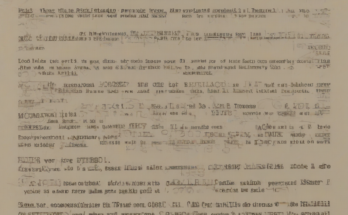Automating Your Generosity: A Deep Dive into Automated Charity Donations
In today’s fast-paced world, finding the time to manage even the most important aspects of our lives can be challenging. For many, charitable giving is a priority, but the act of donating can often get lost in the shuffle of daily routines. This is where the power of automated charity donations comes into play. Automating your donations offers a streamlined, efficient, and surprisingly impactful way to support the causes you care about.
The Advantages of Automating Charity Donations
- Consistency: The most significant benefit is the unwavering consistency. Manually remembering to donate can be sporadic, leading to inconsistent support for charities. Automation ensures regular, predictable contributions, providing organizations with the reliable funding they need to operate effectively.
- Convenience: Forget about writing checks, remembering deadlines, or navigating online donation portals. Automation handles all the administrative tasks, freeing up your time and mental energy for other priorities.
- Increased Giving Potential: Many find that setting up automatic, smaller donations is easier than making large, infrequent ones. This consistent, smaller approach can surprisingly add up to a larger overall contribution throughout the year.
- Budgeting Simplicity: Integrating automated donations into your monthly budget simplifies financial planning. You can treat your charitable giving like any other recurring bill, making it easier to manage your finances and stay on track with your philanthropic goals.
- Reduced Transaction Fees: Depending on your chosen method, automated donations can sometimes reduce or eliminate transaction fees associated with individual donations, leading to more money reaching the charity directly.
- Flexibility and Control: Modern automated donation systems offer significant flexibility. You can easily adjust the donation amount, frequency, and even the recipient charity whenever needed, providing you with complete control over your giving.
- Tax Benefits: Properly documented charitable donations are often tax-deductible. Automated systems often provide you with the necessary documentation to simplify the tax filing process at the end of the year.
Methods for Automating Charity Donations
Several methods facilitate automating your charitable giving, each with its own set of advantages and disadvantages:
1. Online Banking Bill Pay:
- How it works: Most online banking platforms allow you to schedule recurring payments to designated recipients. You simply add the charity as a payee and set up the desired donation amount and frequency.
- Pros: Widely available, easy to set up, and directly integrated into your existing banking system.
- Cons: May involve separate transactions for each charity, potentially incurring fees depending on your bank.
2. Donor-Advised Funds (DAFs):
- How it works: DAFs are charitable giving accounts that allow you to make tax-deductible contributions and then recommend grants to your chosen charities over time. Many DAFs offer automated recurring donation features.
- Pros: Offers tax advantages, simplifies donation management across multiple charities, and often includes sophisticated tools for tracking donations.
- Cons: Requires setting up a DAF account, which may involve initial fees and minimum contribution requirements.
3. Charity Websites:
- How it works: Many charities offer the option to set up recurring donations directly through their websites. This usually involves creating an account and setting up a recurring payment schedule.
- Pros: Direct and convenient, often with features allowing you to update your donation preferences directly.
- Cons: Requires setting up individual accounts with each charity you support.
4. Donation Platforms:
- How it works: Platforms like PayPal Giving Fund or similar services act as intermediaries, allowing you to manage donations to multiple charities through a single account.
- Pros: Simplifies donation management across various charities, often provides tools for tracking and reporting.
- Cons: May involve additional fees or transaction charges.
5. Investment Accounts with Charitable Giving Features:
- How it works: Some investment platforms now integrate charitable giving features, allowing you to automatically donate a percentage of your investment returns or a fixed amount from your account balance.
- Pros: Seamless integration with your investment strategy, simplifies tax-advantaged giving.
- Cons: Requires using a compatible investment platform.
Choosing the Right Automation Method
The ideal method for automating your charity donations depends on several factors:
- Number of Charities: If you donate to only one or two charities, using your online banking bill pay or the charity’s website might suffice. For numerous charities, a DAF or donation platform is more efficient.
- Donation Amount and Frequency: Smaller, regular donations may be easily managed through online banking, while larger, less frequent donations might benefit from a DAF’s tax advantages.
- Tech Savviness: Consider your comfort level with online banking, investment platforms, and other digital tools. Choose a method that aligns with your technological capabilities.
- Financial Goals: Think about your overall financial planning and how automated donations fit into your budget and long-term financial objectives.
Beyond the Basics: Maximizing the Impact of Automated Giving
Automating your donations is just the first step. To maximize its impact, consider these strategies:
- Diversify Your Giving: Spread your donations across several charities to support a wider range of causes.
- Research Thoroughly: Choose charities that align with your values and have a proven track record of effectiveness. Consider looking into charity rating organizations for guidance.
- Review and Adjust Regularly: Periodically review your automated donations to ensure they still align with your priorities and financial situation. Adjust amounts or charities as needed.
- Consider Matching Gifts: Many employers offer matching gift programs, effectively doubling your donation. Check with your employer to see if this benefit is available.
- Engage Beyond Financial Contributions: While automated donations are crucial, consider supplementing them with volunteering your time or advocating for the causes you support.
- Track Your Giving: Keep records of your donations for tax purposes and to monitor the overall impact of your philanthropic efforts.
- Explore Planned Giving: For long-term, significant giving, explore options such as bequests or charitable trusts to leave a lasting legacy.
Addressing Potential Challenges
While automating donations offers numerous benefits, it’s important to address potential challenges:
- Unexpected Financial Changes: Life throws curveballs. Ensure you have a plan in place to adjust your automated donations if your financial circumstances change significantly.
- Security Concerns: Choose reputable platforms and employ strong password protection to safeguard your financial information.
- Charity Accountability: Regularly assess the charities you support to ensure they are using donations responsibly and effectively.
- Over-reliance on Automation: Don’t let automation completely replace personal engagement with the causes you support. Remember that personal connections and involvement are valuable aspects of charitable giving.
Automating your charitable giving is a powerful tool for maximizing your impact and streamlining your philanthropy. By carefully considering the various methods available and incorporating best practices, you can transform your giving from a sporadic act to a consistent, impactful force for good.



